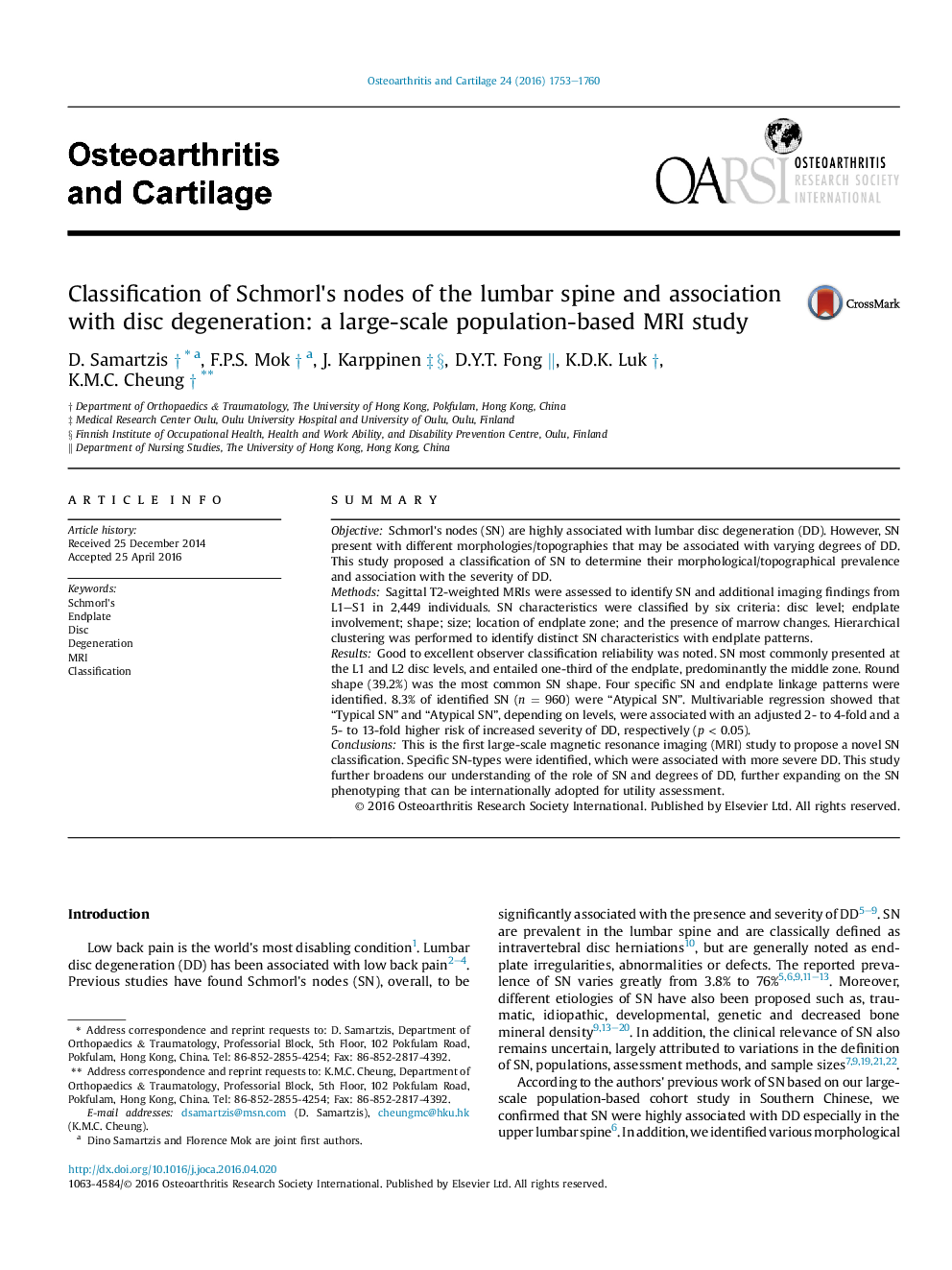| Article ID | Journal | Published Year | Pages | File Type |
|---|---|---|---|---|
| 5669263 | Osteoarthritis and Cartilage | 2016 | 8 Pages |
SummaryObjectiveSchmorl's nodes (SN) are highly associated with lumbar disc degeneration (DD). However, SN present with different morphologies/topographies that may be associated with varying degrees of DD. This study proposed a classification of SN to determine their morphological/topographical prevalence and association with the severity of DD.MethodsSagittal T2-weighted MRIs were assessed to identify SN and additional imaging findings from L1-S1 in 2,449 individuals. SN characteristics were classified by six criteria: disc level; endplate involvement; shape; size; location of endplate zone; and the presence of marrow changes. Hierarchical clustering was performed to identify distinct SN characteristics with endplate patterns.ResultsGood to excellent observer classification reliability was noted. SN most commonly presented at the L1 and L2 disc levels, and entailed one-third of the endplate, predominantly the middle zone. Round shape (39.2%) was the most common SN shape. Four specific SN and endplate linkage patterns were identified. 8.3% of identified SN (n = 960) were “Atypical SN”. Multivariable regression showed that “Typical SN” and “Atypical SN”, depending on levels, were associated with an adjusted 2- to 4-fold and a 5- to 13-fold higher risk of increased severity of DD, respectively (p < 0.05).ConclusionsThis is the first large-scale magnetic resonance imaging (MRI) study to propose a novel SN classification. Specific SN-types were identified, which were associated with more severe DD. This study further broadens our understanding of the role of SN and degrees of DD, further expanding on the SN phenotyping that can be internationally adopted for utility assessment.
